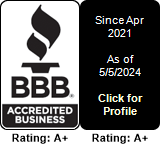How can you analyze and model Google’s SERP behavior for zero-click finance keywords without relying on search volume, click-through rate models, or Google Search Console data?
🟦 SNIPPET EXTRACTION MECHANICS
What content attributes consistently appear in featured snippets for financial queries?
Short-form answers under 300 characters, structured in one to two sentences, with an optional bullet list. Common traits include bolded key terms, use of percentages or monetary values, avoidance of brand-heavy language, and high semantic proximity between H2 and the following paragraph.
Snippable Template
## What is [financial concept]?
[Sentence 1: Precise definition with number or stat.]
[Sentence 2: Contextual range, timeline, or regulatory scope.]
How can you model the question structure Google prefers for snippet extraction?
Scrape existing finance snippets and extract the triggering headers. Analyze linguistic forms such as “how”, “what”, and “can”. Pair these with high-frequency triggers like “deduct”, “withdraw”, “qualify”, or “calculate”. Use cosine similarity between your headers and existing snippet headers to create predictive templates.
🟥 AI OVERVIEW INCLUSION TRIGGERS
How do AI Overviews affect visibility opportunities for financial topics with low CTR?
AI Overviews reduce link-level traffic but reward clarity, structure, and citation consistency. Brands gain inclusion by publishing schema-aligned data, unambiguous language, and entity-linked facts. Visibility comes from being the cleanest and most extractable information source.
What schema configurations increase your chances of appearing in AI Overviews?
Use combinations like Speakable for clear definitions, About for brand-entity context, and sameAs for external identity validation. These should accompany concise, semantic paragraphs internally linked from high-authority clusters to help the system associate source credibility.
🟨 PAA ENTRY MECHANICS
What schema configurations increase your chances of appearing in People Also Ask boxes?
Implement FAQPage with exact-match questions in H2s and compact answers of 2 to 3 sentences. Avoid branded phrasing and inline links in the response. Proximity between the header and answer, along with alignment to the parent query, boosts inclusion probability.
How can you identify user intent in finance queries without GSC query data?
Use autocomplete expansions and track associated SERP features. Informational queries typically trigger snippets or PAA. Transactional ones lead to calculators, product grids, or Local Packs. Combine prefix analysis and observed SERP layout patterns to build intent maps.
🟩 LOCAL PACK CONVERSION LEVERAGE
How do Local Packs shape user behavior in geo-targeted finance searches?
They intercept intent and drive action without site traffic. Users engage via call, direction, or appointment clicks directly in the SERP. Optimize by embedding LocalBusiness schema, maintaining review freshness with local keywords, and aligning GMB details with on-page NAP content.
How can you classify finance queries into transactional, informational, and navigational categories without GSC?
Use SERP structure as signal. Informational queries trigger definitions, snippets, and AI summaries. Transactional ones surface rates, calculators, and local services. Navigational queries highlight brand name matches, sitelinks, and entity panels. Overlay these with NLP intent patterns for refined accuracy.
🟪 KNOWLEDGE PANEL & ENTITY CONTROL
How does Google apply EEAT differently in zero-click financial SERPs?
EEAT acts as a pre-screening mechanism. Google relies on structured author credentials, sameAs references, and third-party profiles to establish identity trust. Financial content linked to licensed professionals or institutionally recognized sources gains visibility faster and more often.
How do brand impressions work in zero-click environments for finance?
Presence across snippets, AI panels, and PAA positions reinforces brand memory. Even without a session, users associate names and structures. These touchpoints create familiarity over repeated exposure and can influence downstream conversions through assisted attribution paths.

⚪ SERP LAYOUT ANALYTICS & VOLATILITY
What patterns in SERP layout signal zero-click behavior in financial queries?
Dominance of AI Overviews, minimized organic listings, and fast-loading interactive widgets are core signals. If a SERP resolves the question in one screen view and includes refinement tools like PAA or definition boxes, click expectation drops drastically.
How can you score SERP volatility for finance keywords?
Create a feature presence log across 14 days. Assign volatility scores based on daily change frequency, feature type rotation, and domain shifts. Use this data to prioritize stable SERPs for consistent schema deployments and target volatile SERPs for tactical testing.
Volatility Score = Σ |rank_t - rank_t-1| / days
Stability Index = (days with same feature owner) / total days
📊 MEASUREMENT LAYER
How can daily SERP snapshot logging reveal visibility trends?
Automate SERP captures with tools like Playwright. Parse DOM to detect feature presence, screen position, and domain ownership. Store structured logs with timestamps, then use heatmaps and trendlines to identify where consistency or instability benefits visibility planning.
How can you track visibility when CTR data is missing?
Use viewport scoring instead of rank. Assign weighted values based on feature prominence and scroll position. Example: above-the-fold AI gets 100 points, snippet 75, PAA 50, organic results under 600 pixels get 25. Aggregate across clusters to model exposure.
What alternative metrics define success for high-stakes keywords with zero clicks?
Metrics include snippet ownership percentage within a cluster, AI Overview citation frequency, recurring domain presence in PAA, and direct engagement signals in Local Pack (e.g. tap-to-call). These indicators better reflect influence than traditional traffic counts.
📚 NLP & CLUSTERING
How can NLP help group zero-click finance keywords without search volume?
Embed keywords with Sentence-BERT and cluster via DBSCAN or KMeans. Annotate each cluster with its dominant SERP feature pattern. This creates a map of topic groups aligned to user intent and interface outcome, not just semantic similarity.
How do autocomplete expansions help estimate finance keyword intent?
Map expansions like “rate”, “limit”, “apply”, “definition”, “guidelines” to inferred user goals. Grouping these with prefix–suffix combinations reveals the commercial or informational weight of a query. This can replace traditional funnel segmentation when keyword data is absent.
💡 STRATEGY & MODELING
Which domain types dominate zero-click finance SERPs and why?
Government (.gov) and regulatory (.org) entities win by default trust. High-authority publishers dominate snippets and list formats due to structural consistency. Affiliates can still win in Local Pack or tools if their schema is accurate and branding is suppressed in answers.
What signals show commercial viability in a zero-click finance query?
Feature richness is a proxy. Presence of calculators, product sliders, rate tables, and affiliate listings in the top 3 signals monetization pressure. Even when users don’t click, the SERP design reflects business intent and competitive investment.
How can you model feature presence across finance queries using screenshot frequency?
Create a matrix:
- Rows = keywords
- Columns = SERP features (AI, snippet, PAA, Local Pack)
- Values = presence frequency across a time window
Visualize with heatmaps to track feature dominance and volatility. This reveals not just where you rank but where Google consistently surfaces you.
📐 CONTENT ENGINEERING
What schema types are most effective for triggering rich results in finance SERPs?
- FAQPage aligns with PAA
- QAPage supports expanded tabbed answers
- HowTo aligns with AI Overview on task-based queries
- Speakable is experimental but maps to featured summaries
Schema must align with section structure, not just page-level markup.
What are the minimal content requirements to qualify for a rich snippet in finance?
Keep answers under 320 characters. Use question-based H2 headers. Structure answers as two-sentence summaries or 3–5 bullet lists. Avoid dense paragraphs or embedded links. Apply schema directly to these sections to maximize extractability and feature eligibility.
Meet Nick Rizkalla — a passionate leader with over 14 years of experience in marketing, business management, and strategic growth. As the co-founder of Southern Digital Consulting, Nick has helped countless businesses turn their vision into reality with custom-tailored website design, SEO, and marketing strategies. His commitment to building genuine relationships, understanding each client’s unique goals, and delivering measurable success sets him apart in today’s fast-moving digital landscape. If you are ready to partner with a trusted expert who brings energy, insight, and results to every project, connect with Nick Rizkalla today. Let’s build something great together.


